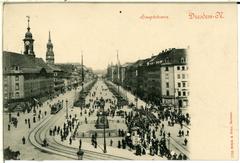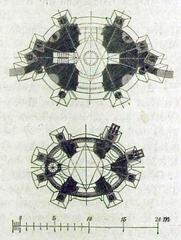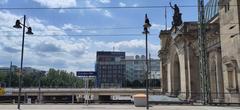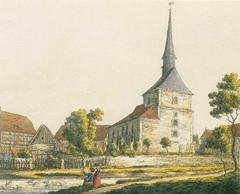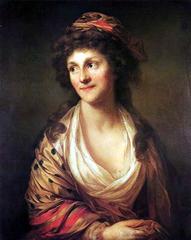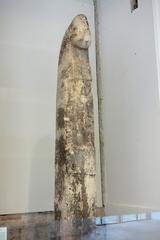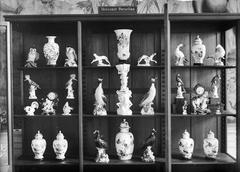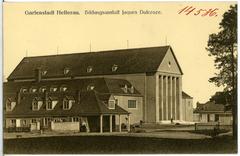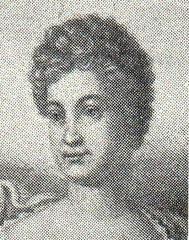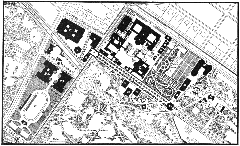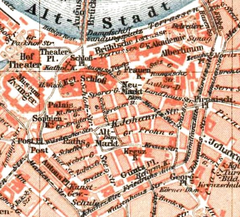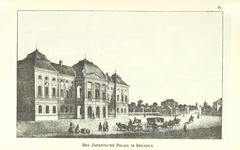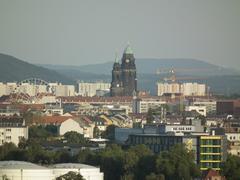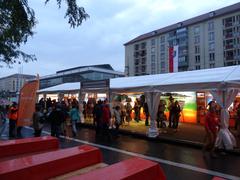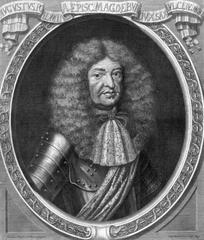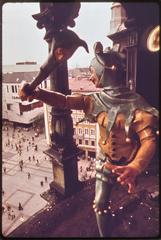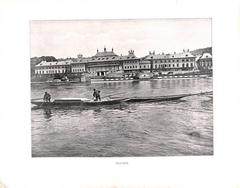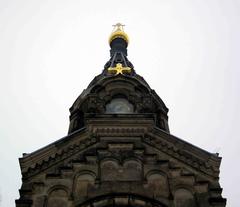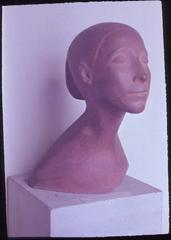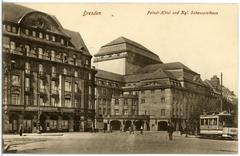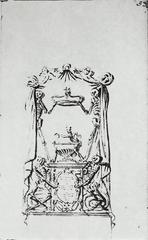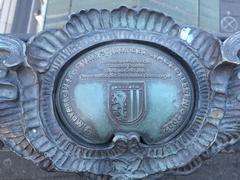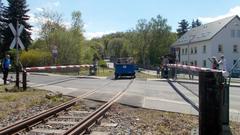
Carl Maria von Weber Museum Dresden: Visiting Hours, Tickets, and Comprehensive Guide
Date: 04/07/2025
Introduction
Nestled in the tranquil Hosterwitz district of Dresden, Germany, the Carl Maria von Weber Museum offers a unique journey into the life and legacy of one of the 19th century’s most influential Romantic composers. Housed in Weber’s original summer residence—a beautifully preserved Saxon winegrower’s house—the museum provides an immersive experience through authentic artifacts, historical documents, and evocative period settings. Whether you are a classical music enthusiast, a history lover, or a visitor exploring Dresden’s rich cultural offerings, this guide details everything you need to know about the museum: from its fascinating history and exhibition highlights to practical visitor information, nearby attractions, and upcoming restoration plans.
(Visit Saxony; Webermuseum Dresden; Museen Dresden, 2024)
Contents
- Historical Context: Carl Maria von Weber and His Dresden Years
- The Hosterwitz House: From Creative Retreat to Museum
- Establishment and Evolution of the Museum
- Collection and Exhibition Highlights
- Visiting the Museum: Hours, Tickets, Facilities
- Accessibility and Visitor Services
- Getting There and Nearby Attractions
- Restoration and 2026 Reopening
- Visitor Tips
- Frequently Asked Questions (FAQ)
- Conclusion
- Sources
Historical Context: Carl Maria von Weber and His Dresden Years
Carl Maria von Weber (1786–1826) was a central figure in the development of German Romantic opera, celebrated for masterpieces such as “Der Freischütz,” “Euryanthe,” and “Oberon.” Appointed Hofkapellmeister (Court Music Director) in Dresden in 1817, Weber became instrumental in shaping the city’s musical landscape. Seeking a peaceful retreat, he and his wife discovered the Hosterwitz winegrower’s house during a countryside walk in 1818. The family spent several productive summers there, with Weber himself describing these as the happiest years of his life.
In this rural haven, Weber composed significant portions of his most renowned works and fostered a circle of prominent artists and musicians, including Johann Nepomuk Hummel, Heinrich Marschner, Louis Spohr, Ludwig Tieck, and Wilhelmine Schröder-Devrient. The house thus became both a creative sanctuary and a hub of artistic exchange.
(Wikipedia; Sachsens Museen Entdecken)
The Hosterwitz House: From Private Home to Memorial
The museum occupies a classic early 19th-century Saxon winegrower’s house at Dresdner Straße 44, approximately one kilometer from Schloss Pillnitz and the Elbe River. Initially, the house was the private property of vintner Gottfried Felsner and, later, Weber’s family. After Weber’s death, his legacy was commemorated through plaques and memorabilia donations, eventually prompting preservation efforts by local heritage organizations. By the early 20th century, the site’s historical importance as Weber’s residence was widely recognized, paving the way for its transformation into a public museum.
Establishment and Evolution of the Museum
Early Memorials and First Exhibitions
The initial step toward a formal museum came in 1948 with the opening of a memorial room. In 1957, following the passing of Mathilde von Weber, the composer’s great-granddaughter, the museum was officially founded, incorporating family heirlooms, period furniture, and personal documents.
Renovations and Modern Management
From 1973–1976, the building underwent extensive renovations to restore its historical character and update its facilities. Since 1995, the Carl Maria von Weber Museum has been part of the Dresden City Museum network, ensuring high curatorial standards and integration with Dresden’s broader cultural scene.
(Webermuseum Dresden; Museum.de)
Collection and Exhibition Highlights
The museum’s permanent exhibition is arranged across two floors, featuring:
- Personal Artifacts: Weber’s tuning fork, baton, signet ring, and period furnishings, offering intimate insights into his daily life.
- Historical Documents: Facsimile scores, diaries, and correspondence (originals are preserved in the Berlin State Library), tracing Weber’s creative process and social networks.
- Composer’s Study: Weber’s reconstructed composing room, complete with writing desk, inkstand, and the piano on which “Der Freischütz” was composed.
- Portraits and Contextual Artworks: Paintings and prints depicting Weber and his contemporaries, as well as scenes from early 19th-century Dresden.
- Interactive Media: Multimedia stations featuring audio samples and video displays (headphones recommended for hygiene).
The museum also hosts temporary exhibitions, lectures, and chamber concerts, maintaining its tradition as a venue for musical and artistic engagement.
Visiting the Museum: Hours, Tickets, Facilities
Standard Opening Hours (pre-restoration)
- Tuesday–Sunday: 10:00 AM – 5:00 PM
- Closed: Mondays and major public holidays
Ticket Prices (subject to change post-2026 reopening)
- Adults: €6
- Reduced (students, seniors): €4
- Children under 18: Free
- Groups (10+): €3 per person (advance booking recommended)
- Annual Pass: €30 individual, €40 family (valid for multiple Dresden museums)
- Free Entry: Friday afternoons (from 1:00 PM, except holidays)
Facilities
- Restrooms and limited cloakroom
- Museum shop with books, recordings, and themed souvenirs
- Garden open to visitors, hosting concerts and special events in summer
Accessibility and Visitor Services
The museum’s historic architecture limits full barrier-free access, particularly to the upper floor. However, staff can provide assistance for visitors with mobility challenges. Service dogs are permitted.
Guided tours are available in German, and English-language tours can be arranged with advance notice. Educational workshops for children and adults are offered regularly.
Getting There and Nearby Attractions
Address
- Dresdner Straße 44, 01326 Dresden-Hosterwitz (sometimes listed as Pillnitzer Landstraße 5 in some sources)
By Public Transport
- Tram lines 2, 4, or 12: Nearest stop is Hosterwitz, a short walk to the museum
- Bus lines 63 or 83: Stops at Van-Gogh-Straße or Leonardo-da-Vinci-Straße
By Car
Limited parking is available nearby. The museum’s riverside location also makes it ideal for cyclists and walkers along the Elbe Valley.
Nearby Attractions
- Schloss Pillnitz: Historic palace and gardens, 1 km south
- Elbe River Promenade: Ideal for scenic walks and cycling
- Other Dresden Highlights: Zwinger Palace, Frauenkirche, and Grünes Gewölbe (reachable by tram or car)
Restoration and 2026 Reopening
The museum has been closed for major restoration since October 2024, with reopening scheduled for 2026 to coincide with the 200th anniversary of Weber’s death. The project includes:
- Structural renovation and hazardous material remediation
- Modernization of electrical, fire safety, and security systems
- Enhanced accessibility for all visitors
- Redesigned permanent and multimedia exhibitions
- Expanded event spaces for concerts, lectures, and community activities
During the closure, a 3D virtual tour is available online, and updates are regularly posted on the museum’s website and social channels.
Visitor Tips
- Plan Ahead: Check the official website for the latest hours, ticket prices, and special event updates.
- Tours: Book guided tours in advance, especially for English language or group visits.
- Best Times: Weekdays and early afternoons tend to be quieter; take advantage of free entry on Fridays.
- Nearby Sites: Combine your visit with Schloss Pillnitz and riverside strolls for a full cultural experience.
- COVID-19: Bring personal headphones for multimedia stations and check for hygiene guidelines.
Frequently Asked Questions (FAQ)
Q: When will the museum reopen?
A: The Carl Maria von Weber Museum is scheduled to reopen in 2026 following restoration.
Q: How can I purchase tickets?
A: Tickets will be available online and at the museum entrance after reopening.
Q: Is the museum accessible for wheelchair users?
A: The restoration includes improved accessibility, but contact the museum for the latest details.
Q: Are guided tours available in English?
A: Yes, with advance booking.
Q: Is photography permitted?
A: Non-flash photography is generally allowed; please ask staff for specific restrictions.
Q: Can children visit?
A: Yes, children under 18 are admitted free, and family-friendly workshops are offered.
Conclusion
The Carl Maria von Weber Museum is a unique cultural destination, offering an authentic window into the world of a pioneering Romantic composer and the artistic spirit of early 19th-century Dresden. With its rich collections, atmospheric setting, and engaging events, the museum is an essential stop for anyone interested in music, cultural history, or Dresden’s heritage. The upcoming 2026 reopening promises enhanced exhibitions, greater accessibility, and exciting anniversary celebrations. Plan your visit, stay updated via the official website or the Audiala app, and immerse yourself in the legacy of Carl Maria von Weber.
Sources and Further Reading
- Carl Maria von Weber Museum in Dresden: History, Visiting Information, and Cultural Highlights (2024)
- Visit Saxony: Carl Maria von Weber Museum Dresden (2024)
- Webermuseum Dresden – About Us (2024)
- Museen Dresden – Carl Maria von Weber Museum (2024)
- Dresden.de – Tourism and Museums (2024)
- Britannica – Carl Maria von Weber Biography (2024)



